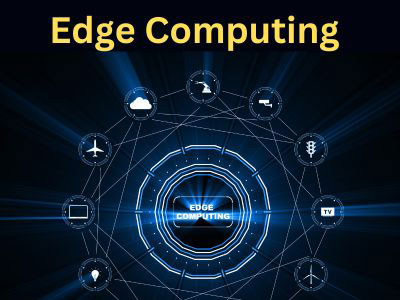Is A Smartphone An Edge Device?
Key Takeaway
Yes, a smartphone is considered an edge device because it processes data locally, reducing the need to send everything to centralized servers. Equipped with powerful processors and sensors, smartphones handle tasks like voice recognition, navigation, and gaming in real-time. This local processing enables faster responses and better performance, especially for applications requiring low latency.
Smartphones also serve as edge devices in IoT ecosystems, connecting and controlling smart home devices, wearables, and more. Their portability, computing power, and connectivity make them essential in edge computing environments. While they have limitations in processing power for complex tasks, smartphones play a pivotal role in bringing edge computing capabilities to everyday life.
What Qualifies as an Edge Device
Edge devices are hardware components that process, store, or transfer data at the “edge” of a network—closer to the source of data generation rather than a centralized server. These devices are crucial for reducing latency, enhancing efficiency, and enabling real-time decision-making. From industrial sensors in factories to smart appliances in homes, edge devices come in many forms, but they share a common trait: localized data handling.
The purpose of edge devices is to process data quickly without relying on remote cloud infrastructure. For example, in a factory setting, sensors equipped with edge computing capabilities monitor machinery in real time, preventing delays caused by data transfer to the cloud.
A smartphone fits many of these criteria. It processes data locally, supports real-time applications, and often connects directly to IoT ecosystems. With the growing adoption of edge computing, smartphones are increasingly recognized as portable, versatile edge devices that contribute significantly to decentralized computing.

Smartphones as Portable Edge Devices
Smartphones are essentially pocket-sized edge devices. They are equipped with powerful processors, GPUs, and storage capabilities that allow them to handle complex computations locally. Features like machine learning, augmented reality, and real-time analytics make smartphones integral to the edge computing ecosystem.
Consider voice assistants like Siri or Google Assistant. While some processing occurs in the cloud, the initial voice recognition often happens locally on the smartphone. This speeds up response times and reduces the need for continuous cloud communication. Similarly, smartphones analyze motion data from accelerometers and gyroscopes to enable real-time navigation without requiring external processing.
Beyond individual use, smartphones can act as mobile edge nodes in larger networks. For instance, in disaster management scenarios, smartphones can process and relay critical information in areas with limited connectivity, ensuring efficient communication and data sharing. Their portability and multifunctionality make them invaluable in edge environments.
You May Like to Read
Examples of Edge Computing on Smartphones
Smartphones enable a variety of edge computing applications that highlight their versatility and power. A prominent example is real-time augmented reality (AR). Apps like Pokémon GO and AR-based shopping tools process graphics and spatial data locally to provide seamless user experiences without lag.
Health monitoring is another area where smartphones shine as edge devices. Paired with wearable sensors, they collect and analyze data such as heart rate and oxygen levels locally before sending summaries to cloud platforms. This setup ensures quicker alerts and improved data security.
Gaming applications also leverage smartphones’ edge capabilities. Games process inputs, render graphics, and manage multiplayer interactions locally to ensure responsive gameplay. Additionally, smartphones in connected cars enable features like navigation, music playback, and voice commands, processing data locally to avoid connectivity lags.
These examples demonstrate how smartphones handle edge computing tasks effectively, enabling smooth and efficient operations across diverse applications.
Limitations of Smartphones in Edge Computing
Despite their capabilities, smartphones face certain limitations as edge devices. One significant constraint is their limited computational power compared to dedicated edge servers. While smartphones can handle everyday tasks efficiently, resource-intensive applications such as large-scale AI inference or real-time industrial analytics exceed their processing capabilities.
Battery life is another critical limitation. Smartphones, being portable devices, rely on finite power sources. Prolonged use of edge computing functions, such as augmented reality or video processing, can drain their batteries quickly, impacting usability.
Additionally, smartphones have restricted storage compared to larger edge devices. While sufficient for personal applications, this limitation can hinder performance in scenarios requiring extensive data logging or analysis.
Finally, network dependency remains a challenge. While smartphones excel in localized processing, many edge computing applications still require stable network connections for optimal performance, especially when integrating with broader IoT systems.
Acknowledging these limitations helps clarify where smartphones fit within the broader edge computing landscape and where alternative devices may be more suitable.
Role of Smartphones in IoT Ecosystems
Smartphones play a pivotal role in the Internet of Things (IoT) by acting as controllers, gateways, and data processors within connected ecosystems. Their ability to interface seamlessly with IoT devices, combined with edge computing capabilities, makes them indispensable.
For example, in smart homes, smartphones serve as hubs for controlling lighting, temperature, and security systems. By processing user commands locally, they enable real-time adjustments and enhance the user experience. Similarly, in healthcare IoT, smartphones collect data from wearables and provide real-time insights to users and healthcare providers.
In industrial IoT, smartphones are used for monitoring and diagnostics. Technicians can use smartphone apps to access and analyze machine data in real time, reducing downtime and improving operational efficiency. Moreover, in agricultural IoT, farmers use smartphones to monitor field sensors and irrigation systems, enabling precise resource management.
Smartphones’ versatility, portability, and edge computing capabilities position them as key enablers of IoT, bridging the gap between users and connected devices.
Conclusion
Smartphones, as edge devices, offer a unique blend of portability, processing power, and connectivity, making them integral to modern edge ecosystems. While they have limitations in computational power and storage, their versatility and ability to process data locally enable a wide range of applications, from AR gaming to IoT integration. As technology evolves, smartphones will continue to play a central role in shaping edge computing, driving innovation, and enhancing user experiences across industries.

